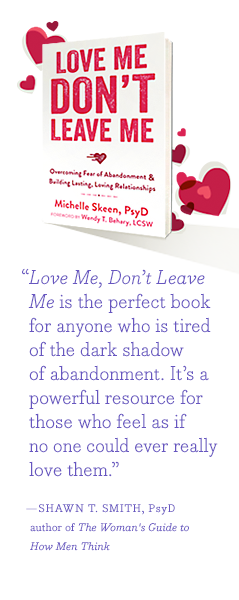Appendix
ATTACHMENT STYLES
Attachment styles in childhood relationships are an important predictor of attachment styles in adult relationships. Identifying the relationship to your primary caregiver during your formative years will bring additional understanding to your current relationship challenges. Let’s look at the three attachment styles (Karen 1998):
Secure Attachment
A secure attachment style for a child looks like what you might imagine:
- The child seeks out the caregiver for comfort when a situation is distressing because she knows that her caregiver will comfort her and make her feel better.
- The child is confident that her caregiver is always available to her.
- The child is upset when the caregiver leaves the child.
- The child is excited when the caregiver returns after the time apart.
- The child is accepting of and comforted by her caregiver’s embrace.
There is normal upset when a caregiver leaves the child, but the caregiver is a consistent presence—physically and emotionally—in the child’s life, so the child feels secure, connected, and safe. A securely attached child is cared for by someone who is attuned to the child’s emotions—reliably and consistently.
Avoidant Attachment
In contrast, the avoidantly attached child experiences a primary
caregiver who is rejecting and, at times, harsh. As a result:
- The child depends less on her caregiver as a secure base.
- The child is at times aggressive toward her caregiver.
- The child is more clingy and demanding in the home environment than the securely attached child.
- The child shows no interest in the caregiver when he or she returns even though the child was distressed when the caregiver left.
In this situation the child cannot consistently rely on her caregiver for connection, safety, and security. The child can be angry toward, clingy with, or disinterested in her caregiver.
Ambivalent Attachment
The ambivalently attached child is raised by a caregiver who is inconsistent and creates a chaotic environment for the child. This results in:
- A child who is overtly anxious.
- A child who is clingy and demanding in the home environment.
- A child who is upset when the caregiver leaves and wants the caregiver desperately when he or she returns, even though the child is inconsolable.
This child experiences a great deal of anxiety and is frequently overwhelmed by her anxious feelings when she is separated from her caregiver.
Children who receive the most consistently positive care are able to develop stable self-reliance combined with a trust in others. The stability in the quality of the caregiver-child relationship is related to the stability in the child’s general adaptability, including her relationship to others, ways of dealing with stressful situations, expectations of others, and an overall perception of and approach to the world.
It makes sense that a child’s attachment to her caregiver would set the stage for what she would expect from others and how she would cope with stressful situations. I’ll discuss it more in future chapters, but children with secure attachments are more flexible in their thinking, resulting in the ability to manage their impulses and desires more than anxiously attached (this includes the ambivalently and avoidantly attached) children. Children who don’t experience a secure attachment don’t feel safe—the stage has been set for them to be overwhelmed by fear and negative emotions that would eclipse their ability to manage their impulses and desires. They are in a fight for survival—or it certainly feels like it.
When we look at the characteristics of the caregiver of the avoidantly attached child—rejecting and harsh—it doesn’t take much to make the connection to the core beliefs of abandonment, mistrust and abuse, emotional deprivation, defectiveness, and failure. The characteristics of the caregiver of the ambivalently attached child—inconsistent and chaotic—also make it easy to link the deeply held beliefs about yourself and what you expect
from others with the five primary core beliefs that are discussed in this book.

